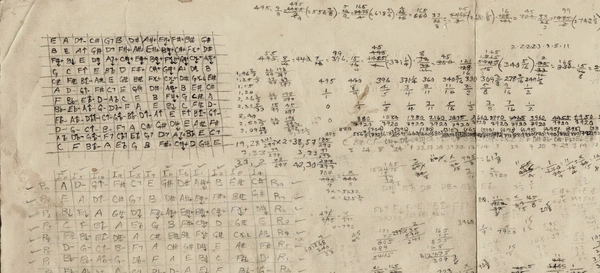Just intonation introduction
Just intonation is a subject in music theory I find really fascinating. When I make the bookmark section of my site, I’d like to devote a nice big page to explaining how I think about it. For now, I might lay some groundwork with one or a few posts. The term “just intonation” refers to systems of musical tuning where pitches are arranged according to integer ratios, generally simple ones. To understand what this means better, let’s examine the concept of the musical interval.
If you’re not familiar, an interval is basically just the distance between two notes (e.g., a whole step, a major third, an octave). In conventional western music theory, every interval can be broken down into half steps, AKA semitones, which are the smallest interval possible in the 12-tone system. With our examples, the whole step is made of two half steps, the major third is made of four, and the octave is made of a full 12 half steps.
Since every interval is made of half steps, you can add and subtract these intervals as you like. If I start at C, go up a perfect fifth (7 half steps), and then go down a minor third (–3 half steps), I wind up at E, the major third, same as if I had just gone up by 4 half steps. With its intervals made of convenient half steps, 12-tone tuning leads us to think about intervals as additive elements like this. But as it turns out, intervals are not really additive by nature.

Suppose you hear a pitch with a frequency of 100 Hz. If we double that frequency to 200 Hz, you will perceive the new pitch as being exactly an octave higher. How do we reach the next octave? If intervals were additive, you would expect have to add the same 100 Hz as last time, so we would find the octave at 300 Hz. But in fact, the next octave requires yet another doubling: you’ll find it at 400 Hz.
This is the case with all intervals: there is a logarithmic relationship between the physical frequency and perceived pitch of a tone. You have to multiply a frequency by a consistent factor to add a consistent interval to a pitch. Just intonation reflects this relationship by using ratios that combine by multiplication rather than adding as the natural language for musical intervals.
If intervals are actually multiplicative, why are they additive in the conventional 12-tone system? When it comes to tuning real instruments, equal temperament systems such as 12-tone offer a critical benefit by being “closed”. As long as you only use intervals made of half steps, you can combine them however you want and you will never play a note outside of the tuning. This means you can fit all the notes you’ll need on, say, a piano. It also means you can transpose songs with any of those intervals, and you’ll still have all the keys you need.
Equal temperament comes at a cost, though. I won’t get into it today, but due to equal temperament, every interval on a piano is actually slightly out of tune, with the exception of the octave. And even though it has practical benefits, I think the closedness I described above is also a loss, in a way. The clean theoretical framework of 12 tones leaves little room for exploring the expressive potential of notes you can’t play on the piano, the “notes between the notes”, as it were.
By contrast, just intonation opens things up by allowing for any ratio as an interval, rather than a limited set of intervals based on discrete half notes. This unlocks a whole menagerie of exotic intervals and a theoretically unlimited set of possible pitches. To a musician who only knows the fenced-in pasture of the 12-tone system, this offer of a new horizon is enticing, but few have taken it up. The string quartets of Ben Johnston are a great starting place if you’re curious to hear what’s possible between the notes.
Are you familiar with just intonation?
Are you familiar with equal temperament?
Would you like to hear more about just intonation?
Let me know your thoughts at my Ctrl-C email: gome @ ctrl-c.club.
Next post in series
Just intonation: the harmonic series
The underlying structure of pitches